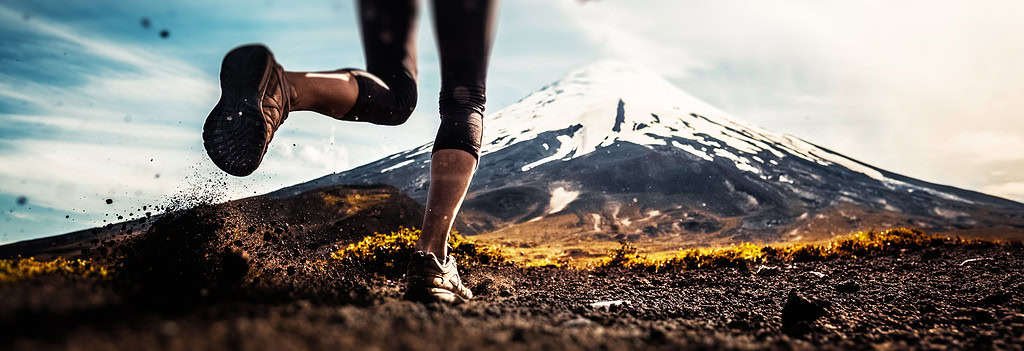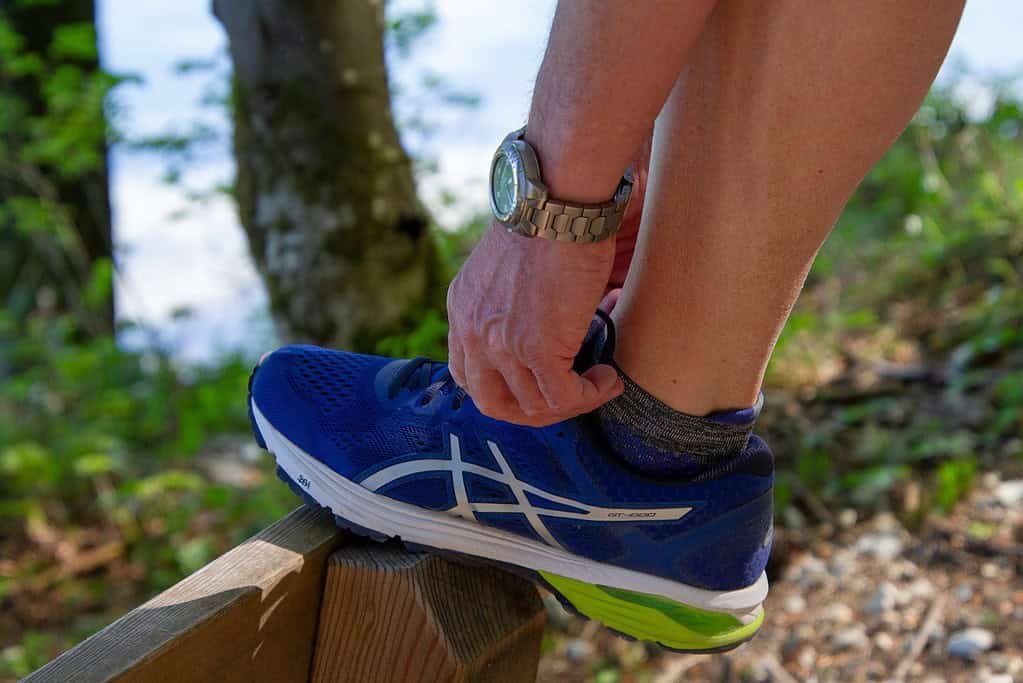
Tired of the same old routes on your runs? Trail running could be just what you need to mix things up. It’s a special way to get into nature, surrounded by trees and far from city noise. Not only is trail running good for keeping fit and healthy, but it also brings an adventurous spirit and a chance to explore. Bonus, if you fall and hurt yourself, no one is around to laugh at you. That’s usually a good thing!
While there are similarities between road running and hitting the trails—both keep you in shape through simple activities—they’re not quite the same. On trails, you’ll find yourself navigating uneven ground, dodging rocks and roots, along with tackling hills that add excitement as well as physical and mental challenges not found on paved paths.
In this blog post we’ve got all sorts of helpful hints for those ready to give trail running a go or seasoned runners looking for new adventures off-road. These tips aim at helping both beginners eager about starting their journey in the trail-running world or any road runner wanting something different; they will guide you through taking on these natural courses successfully in your first year of trail running.
What are the benefits of trail running compared to road running?
Trail running provides a softer surface that reduces the impact on joints, enhances balance and proprioception due to varied terrain, boosts mental health by connecting with nature, and burns more calories as it engages more muscles. It also offers a break from the monotony of road running.
| TL;DR: Trail Running vs. Road Running |
| • Unique adventure compared to roads |
| • Different joys and challenges |
| • Requires specific shoes and gear |
| • Beginners need a clear guide |
| • Learning trail techniques is crucial |
| • Mastering ups and downs boosts skills |
| • Proper preparation increases enjoyment |
| • Eases transition between trail and road |
Embracing the Basics of Trail Running

Before you start trail running, it’s key to get the basics down and see how it’s different from road running. When you’re a trail runner, you run on natural paths like dirt trails, rocky routes, and through forests instead of on smooth roads. You’ll have to deal with bumpy ground, go up and down hills, and dodge things like rocks, roots, and mud. Getting why people love trail running and facing these hurdles head-on is crucial for doing well out there.
Understanding the Appeal of Trail Running
Running on trails gives you a special feeling that’s pretty different from hitting the pavement. For starters, it lets you get up close with nature and check out new places. Imagine jogging through woods, racing down mountain paths, or running by rivers and lakes – it’s all about adventure and feeling free. Seeing all the beautiful sights around can also pump you up during your run.
With trail running, things are more interesting than just pounding the sidewalk because of how uneven and full of surprises the ground is. This kind of terrain makes your body work harder in keeping balance and moving forward, which means more muscle groups get involved compared to road running. It not only boosts your physical fitness but keeps your mind sharp since you have to pay attention to where you’re stepping next.
So really, what makes trail running stand out is this mix of testing both your body and mind while letting you soak in awesome views that make every run feel like an escape into wilderness adventures – something road running might not always offer.
Key Differences Between Trail Running and Road Running
While road running and trail running both involve the act of running, they’re pretty different from each other. With road running, you’re on smooth surfaces like sidewalks and roads or even tracks. On the flip side, when it comes to trail running, you find yourself moving over natural ground – think dirt paths through forests or uneven trails with lots of ups and downs.
Another “fun” factor if you are trail running especially down South or out West. You most likely get to dodge venomous snakes. I have heard a few stories recently about Timber rattlesnakes on trails in Arkansas where I live. They can be aggressive and are not to be messed with, very dangerous snakes.
However, for some people, the pace is a more difficult challenge while for others, the terrain is the killer factor. Understanding the key differences between trail running and road running, including the different kinds of challenge each presents, can give you a competitive edge and help you conquer the trails and achieve success in both types of running.
Unlike the sometimes repetitive feel of pounding pavement, road running, hitting the trails offers a constantly changing environment that keeps things interesting – not to mention needing some extra skills for dodging obstacles along your path!
Preparing for Your First Trail Run

Before you hit the trails for your first trail run, it’s key to get ready so you can have a good time and stay safe. Choosing the right trail shoes is super important. Unlike regular road running shoes, trail shoes are made to handle rough paths with features like better traction and more durability. This means they help keep your feet comfy and steady, even when covering long distances.
Currently my shoe of choice is Merrell trail running shoes. They are great shoes and have lasted a while now. But, I am ready to try something new soon. After watching Western States 100 this year, my trail shoe selection has been narrowed down to 2 different shoes either Hoka or Salomon.
Along with picking out some sturdy trail running shoes, don’t forget to pack all the necessary gear. You’ll need things that help manage sweat like clothes that dry fast, something to drink from like a hydration pack or water bottle, sunscreen, a hat for shade, and bug spray to keep those pesky insects away. Having all this stuff will definitely make your experience on the trails way nicer.
Selecting the Right Trail Running Shoes

When you’re into trail running, picking the right shoes is key to having a good time and doing well. Trail shoes are made just for off-road runs, offering the support and safety your feet need. They’re tougher than road running shoes, built with better traction and stability in mind.
With trail running shoes, think about where you’ll be jogging most of the time. For smoother paths that aren’t too tricky, go for something light but sturdy enough to handle dirt and gravel while keeping your steps comfy. But if you’re going over rough spots filled with rocks or mud puddles, choose trail shoes designed with deep lugs to grip better under those conditions.
Getting a shoe that fits right is crucial too. You want it tight around your heel so it doesn’t slip but also roomy at the front so your toes can move freely. Trying on various brands or styles helps a lot here; talking to someone who knows their stuff at the store could make finding perfect-fitting trail runners easier.
Two of my favorite endurance athletes Courtney Dauwalter and Rich Roll are both on Team Salomon now. So guess where my next pair of trail running shoes will come from. If elite athletes can run in them, then they are perfect for me!
Essential Gear for Trail Running
Besides trail running shoes, there are several key items you should consider bringing along to make your run on the trails more enjoyable and safe. What you need might change based on how long or tough your run is, but generally speaking, here’s what most runners find useful:
- Clothes that wick away sweat: Go for clothes that are light and let your skin breathe while keeping sweat off of it.
- Something to drink from: It’s really important to drink water when you’re out running for a while. So, having a hydration pack or just a simple water bottle with you makes sure you stay hydrated.
- Sunscreen: Before hitting the trails, put on some sunscreen to protect yourself from getting sunburned.
- A hat: Wearing a hat can help keep the sun off your face and provide some shade.
- Bug spray: If bugs tend to bother where and when you’re running, bug spray can be super helpful in keeping them away.
- A jacket for rain or wind: The weather can switch up pretty fast sometimes. Having something like a lightweight jacket means you’re ready no matter what happens with the weather.
- With regards to finding your way around; knowing where exactly those winding paths go by carrying either an old-school map or using modern GPS tech helps avoid getting lost.
- A Garmin watch is not essential but it does come in handy out on the trail. I have been a Garmin fan for as long as I can remember and they have never let me down.
Step-by-Step Guide to Start Trail Running
If you’re just dipping your toes into trail running, a step-by-step guide can really help kick things off properly and boost your confidence in hitting those trails. By beginning at a slow pace and slowly upping both the length and challenge of your runs, you give your body the chance to get used to what trail running asks of it. Here’s a simple guide on how to start with trail running:
Step 1: Find Well-Marked Trails for Beginners
When you’re just getting into trail running, it’s a good idea to start with trails that are easy to follow and right for beginners. Search for these kinds of paths in local parks, nature reserves, or areas set aside specifically for trail running. These places usually have clear signs and maps to help guide you on your way.
With well-marked trails, you won’t have as much trouble figuring out where to go, which means there’s less chance of losing your path. Plus, these beginner-friendly trails tend not to be too steep and have surfaces that are pretty smooth – perfect for someone who’s still learning the ropes of trail running. Running in such spots can also make you feel more secure and confident as you get used to this new adventure.
Step 2: Start with Short Distances
When you’re new to trail running, it’s a good idea to kick things off with shorter runs and then slowly add more miles. Start by picking a distance that feels comfortable for you, like what you’d normally run on the road—maybe a 5K or 10K. This way, your body gets used to the new challenges of hitting the trails without feeling too stressed out. As time goes on and you feel more at ease running through nature, it’s okay to start pushing yourself further.
With trail running, remember that it takes different effort compared to road running. You’ll find yourself working harder because of all the ups and downs, not-so-smooth paths, and stuff in your way that requires jumping over or dodging around. These elements make your body work in ways it might not be used to since they activate various muscle groups differently than smooth pavement does.
Think of each given trail run as an adventure with a good friend, similar to going on a cross country trip with your national champion cross country team—it’s about enjoying where you are and what surrounds you rather than just how fast reactions or far you can go.
Step 3: Focus on Your Form and Footing
When you switch from road running to trail running, you’ll need to tweak how you run a bit. The way your feet hit the ground and your overall posture have to adjust because trails can be more unpredictable than smooth roads. Here’s what can help:
- By shortening your steps and speeding them up, you stay balanced on uneven ground.
- Always aim to land with your feet right under you which helps keep trips and falls at bay.
- Don’t stretch your legs too far forward. Also, make sure to look down regularly so that any obstacles like rocks or roots are spotted early enough.
- Moving your arms around can also play a big part in keeping steady; remember not to tense up too much around the middle of your body either.
- When it comes down to getting past things blocking the path, slow is smooth – pick where each foot will go carefully.
- -With uphill bits, think small quick steps instead of long strides; stand tall without bending over much at all.
- -Tackling downhill parts? Try not leaning back but rather lean into it slightly for better control while avoiding putting too much pressure on yourself.
This approach keeps injuries away and boosts confidence as every step takes care across varying terrains found off-road compared with smoother surfaces encountered during road running.
Step 4: Gradually Increase Difficulty and Distance
After you’ve gotten the hang of shorter trail runs, it’s okay to slowly start running longer distances and picking trails that are a bit tougher. This means going for paths with higher elevation gain, steeper hills, and rougher ground. As you get used to handling these kinds of challenges in trail running, you can look for even harder trails that give you more excitement and make your workouts tougher the hard way.
But remember, it’s key to take things slow so you don’t push yourself too hard too fast and end up getting hurt. By carefully increasing how tough and long your runs are, your body will get better at handling them over time. This way, you’ll keep enjoying your time on the trails while getting stronger.
Conclusion
Start your adventure in trail running with a few key tips to make sure you’re ready and confident. Knowing the differences between trail running and road running, picking out the right equipment, and getting good at certain skills will help you have a fun and successful time.
I have so many trails in my area to run its a trail runners dream. Although as mentioned before, I have to watch out for the wildlife, especially snakes in the warmer months. In times like that I tend to break my runs in two different times of the day. I like to start out early in the morning around 5ish with a warmup run and then the main run usually takes place after 6 when the day starts to “cool” down a bit. This seems to work best for me. What do your runs look like? When do you run?
It’s important to always think about safety, know where you are on the trails, and maybe even join a group of other trail runners for extra support and encouragement. No matter if you’re just starting or have been running for years, these pieces of advice will help you tackle those trails without trouble. Don’t forget to post about your experiences with trail running online; it might encourage someone else to put on their sneakers and enjoy nature!
Frequently Asked Questions
How Do I Choose the Right Trail Running Shoes?
When picking out trail running shoes, it’s really important to find ones that make your run both comfy and safe. Here are some things you should think about:
- For grip, go for shoes with a tough bottom part so you won’t slip on different kinds of ground like rocks or mud.
- With stability in mind, choose shoes that help keep your feet steady over bumpy paths and when going up or down hills.
- Make sure the shoes can take a beating from rough trails and last a long time.
- The fit and how they feel are key too; they should be snug but not tight, with enough padding to protect your feet during longer runs.
What Should I Do if I Encounter Wildlife on the Trail?
When you’re out trail running and come across animals, keeping both yourself and the creatures safe should be your top priority. Here’s what you can do:
- Keep a good distance away to make sure you don’t bother or scare them.
- If possible, slow down or even stop moving so the animals won’t get frightened.
- By making some noise like clapping your hands or talking in a calm voice, let them know you’re there.
- In case any animal seems ready to attack or gets too close for comfort, carefully move back to give it plenty of room.
